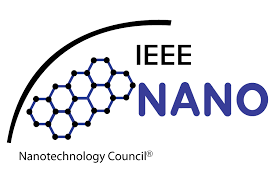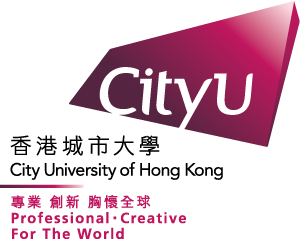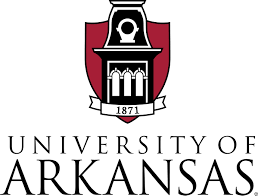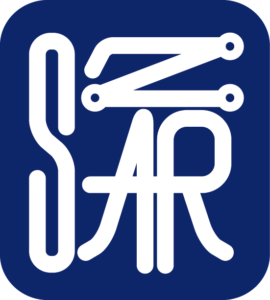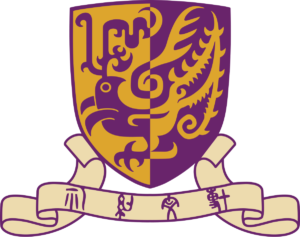Plenary Lecture 1
Demonstration Hall, 1/F
December 2 (Saturday), 8:40-9:30
Detection of bacteria on microfluidic systems
Gwo-Bin LEE
Chair Professor of National Tsing Hua University
Department of Power Mechanical Engineering
Institute of Biomedical Engineering
Institute of NanoEngineering and Microsystems
National Tsing Hua University
Hsinchu, Taiwan
Abstract: In this talk, he will briefly introduce several research works in my group using integrated microfluidic systems for detection of bacteria. For bacterial detection, we can now answer the following questions:
- Was it infected by bacteria?
- What kind of bacteria caused the infection?
- Arebacteria alive or dead?
- Arebacteria antibiotics-resistant?
- What kind of antibiotics and dose could cure this bacterial infection?
Biography: Gwo-Bin LEE received his B.S. and M.S. degrees in Department of Mechanical Engineering from National Taiwan University in 1989 and 1991, respectively. He received his Ph.D. in Mechanical & Aerospace Engineering from University of California, Los Angeles, USA in 1998. Dr. Gwo-Bin LEE is currently a Chair Professor in the Department of Power Mechanical Engineering at National Tsing Hua University. His research interests lie on nano-biotechnology, micro/nanofluidics and their biomedical applications. He is the directors of “MEMS Design and Microfabrication Lab” and “Microfluidic Biochips Lab”. Dr. LEE has been very active in the field of micro/nanofluidic systems, and has developed integrated micro/nano systems incorporated with nano/biotechnology for biomedical applications. He has developed several micro/nano-scale platforms for cell, protein, and DNA manipulation and detection. Dr. LEE has published over 272 SCI journal papers, 384 conference papers, and filed 147 patents (101 patents granted) in the past 19 years. His works have been highly cited (over 7200 times) with an H-index of 46 (ISI). In Google Scholar, citations of all Dr. LEE’s papers are 12000 times with an h-index of 60. He also published 8 book chapters. He has served as a technical or organizing committee member in many international conferences. He was General Co-chair of IEEE NEMS 2014, IEEE MEMS 2013, IEEE NANOMED 2013, and General chair of IEEE NEMS 2011. He has received several academic awards, including Dragon Thesis Award (2002), Distinguished Research Award from Engineering School of National Cheng Kung University (2002), Distinguished Young Engineer Award from Chinese Engineering Society (2003), K. T. Lee Research Award from K. T. Lee Foundation (2004), Distinguished Mechanical Engineer Award from Chinese Mechanical Engineering Society (2004), Distinguished Young Electrical Engineer Award from Chinese Electrical Engineering Society (2005), Young People of the Year (2006), Distinguished Engineering Professor from Chinese Mechanical Engineering Society (2006), Engineering Professor Award from Southern Division of Chinese Engineering Society (2007), Excellent Research Award from National Science Council in Taiwan (2007, 2011, 2014), National Innovation Award (2008, 2010, 2012, 2013, 2016), Distinguished Engineering Professor Award from Chinese Engineering Society (2009), Distinguished Kuo-Ting LEE Researcher Award from Kuo-Ting LEE Foundation (2009), and Outstanding Inventor Award (2011). He is the Fellow of Society of Theoretical and Applied Mechanics and the Fellow of Chinese Society of Mechanical Engineering. He was an elected ASME Fellow in 2013, an elected RSC Fellow in 2014, elected IET Fellow in 2015, and elected IEEE Fellow in 2016. He has been invited in various conferences for plenary and keynote talks. Currently, he is joint Editor-in-chief of Micro and Nano Letters and editor of several journals, including Scientific Reports, IET Bionanotechnology, Micro and Nanosystem, Microfluidics and Nanofluidics and Recent Patents on Nanotechnology. He is also a member of advisory board in Lab on a chip journal. He was the chair of International Steering Committee of IEEE MEMS 2015.
Plenary Lecture 2
Demonstration Hall, 1/F
December 2 (Saturday), 13:00-13:50
3D Microfluidic Platform for Organ on a Chip Applications and Beyond
Noo Li JEON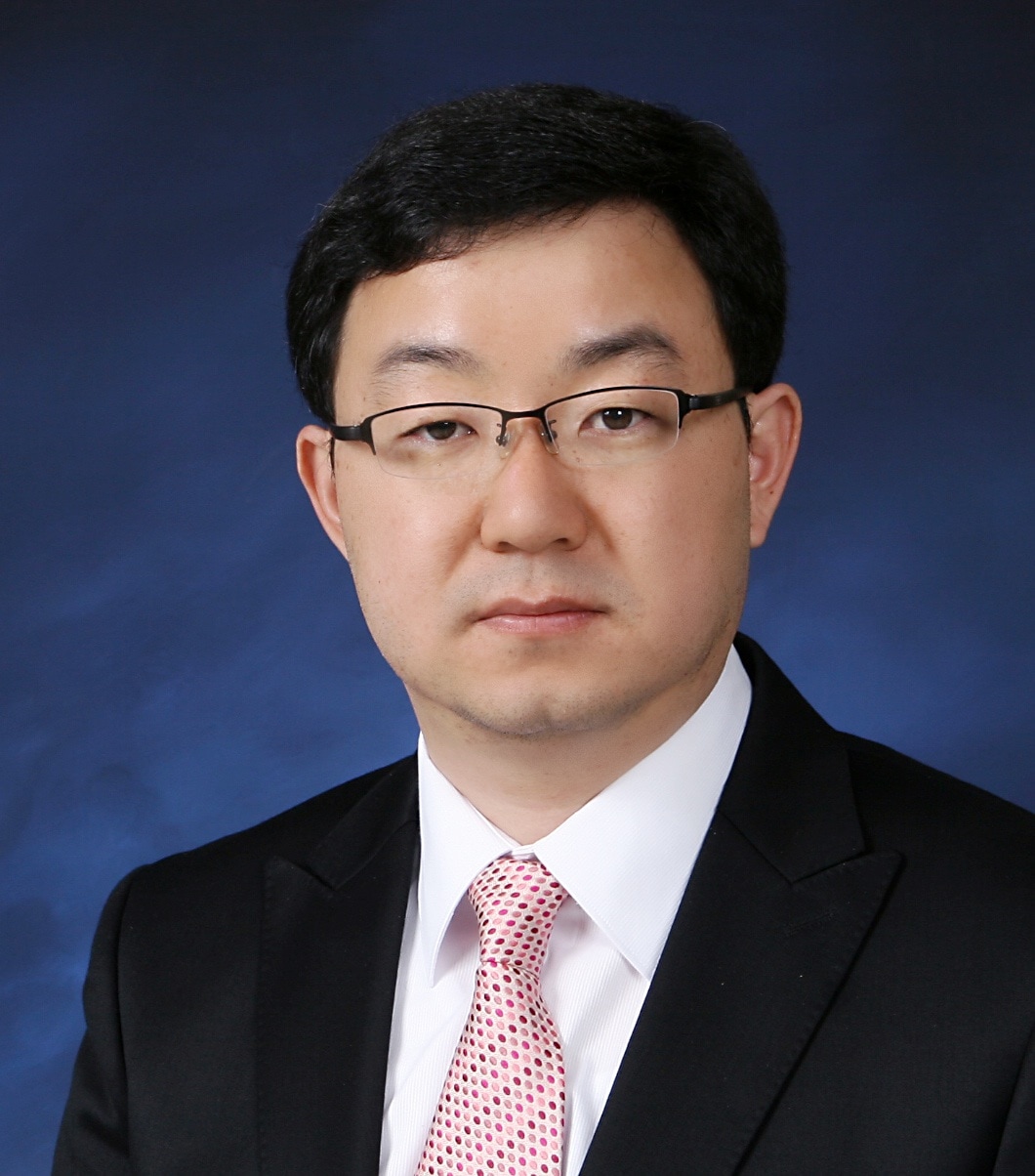
Professor
School of Mechanical and Aerospace Engineering
Seoul National University
Seoul, Korea
E-mail : [email protected]
Abstract: This presentation will describe the development of 3D microfluidic platform for vascularized organ on a chip applications. Applications of the vascular platform for modeling eye, skin, and bone will be described. Recent development of injection molded device for high throughput drug screening will also be described.
Biography: Prof. Noo Li JEON obtained his Ph.D. degree in Materials Science and Engineering from the University of Illinois, Urbana-Champagne in 1997 under Prof. Ralph G. Nuzzo. After postdoctoral research in Prof. George M. Whitesides’ laboratory at Harvard University working on soft lithography related projects and microfluidic devices, he spent a year in Prof Mehmet Toner’s laboratory at Harvard Medical School working on neutrophil chemotaxis in microfluidic devices. From 2001 to 2009, he was an Assistant and Associate Professor in the Department of Biomedical Engineering at University of California, Irvine. He joined the School of Mechanical and Aerospace Engineering at Seoul National University in 2009. His current research interest spans biomedical engineering, materials science, and mechanical engineering.
Plenary Lecture 3
Demonstration Hall, 1/F
December 3 (Sunday), 8:30-9:20
Acoustofluidics: merging acoustics and microfluidics for biomedical applications
Tony Jun HUANG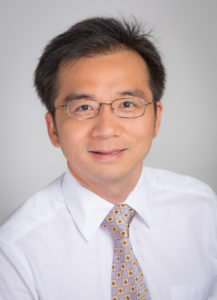
Professor of Mechanical Engineering and Materials Science (MEMS)
Pratt School of Engineering
Duke University
Group Website: https://acoustofluidics.pratt.duke.edu/
Abstract: The past two decades have witnessed an explosion in lab-on-a-chip research with applications in biology, chemistry, and medicine. The continuous fusion of novel properties of physics into microfluidic environments has enabled the rapid development of this field. Recently, a new lab-on-a-chip frontier has emerged, joining acoustics with microfluidics, termed acoustofluidics. Here we summarize our recent progress in this exciting field and show the depth and breadth of acoustofluidic tools for biomedical applications through many unique examples, from exosome separation to cell-cell communications to 3D bioprinting, from circulating tumor cell isolation and detection to ultra-high-throughput blood cell separation for therapeutics, from high-precision micro-flow cytometry to portable yet powerful fluid manipulation systems. These acoustofluidic technologies are capable of delivering high-precision, high-throughput, and high-efficiency cell/particle/fluid manipulation in a simple, inexpensive, cell-phone-sized device. More importantly, the acoustic power intensity and frequency used in these acoustofluidic devices are in a similar range as those used in ultrasonic imaging, which has proven to be extremely safe for health monitoring during various stages of pregnancy. As a result, these methods are extremely biocompatible; i.e., cells and other biospecimen can maintain their natural states without any adverse effects from the acoustic manipulation process. With these unique advantages, acoustofluidic technologies meet a crucial need for highly accurate and amenable disease diagnosis (e.g., early cancer detection and prenatal health) as well as effective therapy (e.g., transfusion and immunotherapy).
Biography: Tony Jun HUANG is a professor at Department of Mechanical Engineering and Materials Science (MEMS) at Duke University. Previously he was a professor and The Huck Distinguished Chair in Bioengineering Science and Mechanics at The Pennsylvania State University. He received his Ph.D. degree in Mechanical and Aerospace Engineering from the University of California, Los Angeles (UCLA) in 2005. His research interests are in the fields of acoustofluidics, optofluidics, and micro/nano systems for biomedical diagnostics and therapeutics. He has authored/co-authored over 180 peer-reviewed journal publications in these fields. His journal articles have been cited more than 11,000 times, as documented at Google Scholar (h-index: 58). He also has 19 patents and invention disclosures. He was elected a fellow of the following five professional societies: the American Institute for Medical and Biological Engineering (AIMBE), the American Society of Mechanical Engineers (ASME), the Institute of Electrical and Electronics Engineers (IEEE), the Institute of Physics (IOP), and the Royal Society of Chemistry (RSC). Huang’s research has gained international recognition through numerous prestigious awards and honors including a 2010 National Institutes of Health (NIH) Director’s New Innovator Award, a 2012 Outstanding Young Manufacturing Engineer Award from the Society for Manufacturing Engineering, a 2013 American Asthma Foundation (AAF) Scholar Award, JALA Top Ten Breakthroughs of the Year Award in 2011, 2013, and 2016, the 2014 IEEE Sensors Council Technical Achievement Award from the Institute of Electrical and Electronics Engineers (IEEE), and the 2017 Analytical Chemistry Young Innovator Award from the American Chemical Society (ACS).
Plenary Lecture 4
Demonstration Hall, 1/F
December 3 (Sunday), 9:20-10:10
Micro/Nano Biomedical Imaging Devices
John T.W. YEOW
Professor
Canada Research Chair in Micro/Nano Devices
Department of Systems Design Engineering
University of Waterloo
Ontario, Canada
E-mail : [email protected]
Abstract: The emergence of minimally invasive diagnostics and therapeutics in modern high-tech medicine has generated an unmet demand in miniaturized biomedical devices. There exists a definite need for clinical diagnostic and treatment instruments that are based on micro and nanotechnologies. In the past decade, micromachining technology and nanomaterials are making big impacts in many fields, especially in the field of biomedical engineering. The small size and low mass provided by micro/nanodevices make medical instruments portable, power efficient, and, in many cases, more effective. This talk will focus on the current development of the state-of-the-art miniaturized X-ray CT machines, and ultrasound imaging devices.
Biography: John T.W. YEOW received the B.A.Sc. degree in electrical and computer engineering, and M.A.Sc. and PhD. degrees in mechanical and industrial engineering from the University of Toronto, Toronto, ON, Canada. He is currently a Professor in the Department of Systems Design Engineering at University of Waterloo, Waterloo, ON, Canada. His current research interests are in the field of developing miniaturized biomedical instruments. He is a recipient of the Professional Engineering Ontario Young Engineer Medal, Professional Engineering Ontario Engineering Excellence Award, Natural Science & Engineering Research Canada Innovation Challenge Award, Douglas R. Colton’s Medal of Research Excellence, Micralyne Microsystems Design Award, Ontario Ministry of Research and Innovation’s Early Researcher Award, and University of Toronto Alumni Association 7T6 Early Career Award. He is a Canada Research Chair in Micro/Nanodevices. He is the Editor-in-Chief of the IEEE Nanotechnology Magazine, an Associate Editor of the IEEE Transactions of Nanotechnology, and a member of the Editorial Board of Scientific Reports (Nature Publishing Group). He is a Fellow of the Engineering Institute of Canada, and a Member of College of New Scholars, Artists and Scientists of the Royal Society of Canada. He is also a 2017 IEEE Nanotechnology Technical Council Distinguished Lecturer.
Plenary Lecture 5
Demonstration Hall, 1/F
December 3 (Sunday), 10:30-11:20
Robotic Cell Manipulation: Surgery, Diagnostics, and Drug Screen
Yu SUN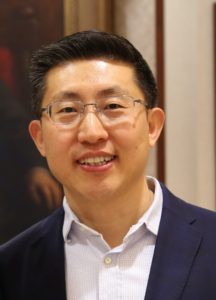
Professor
Canada Research Chair in Micro and Nano Engineering Systems
University of Toronto McLean Senior Faculty Fellow
Department of Mechanical and Industrial Engineering
Institute of Biomaterials and Biomedical Engineering
Department of Electrical and Computer Engineering
University of Toronto
Ontario, Canada
E-mail : [email protected]
Abstract: Advances in medicine demand robotic technologies for automated manipulation and characterization of cells and sub-cellular structures. Robotic cell surgery and automated characterization of cells enable new frontiers in medicine. Robotic deposition of foreign materials into cells is poised to revolutionize drug efficacy tests fordrug repurposing and personalized medication. In this talk, I will first provide an overview of recent progress in medical micro-nanorobotics. Technical challenges in robotic cell manipulation will then be introduced. Next, I will summarize recent progress in clinical trial of our robotic cell surgery technology. I willthen present robotic characterization of voided urine cells to bolster clinical bladder cancer diagnostics. Drug screen for cardiovascular disease management, enabled by robotic cell manipulation, will also be discussed. I will end the talk by sharing recent activities that shift the paradigm of robotic cell manipulation from single-cell manipulation to intracellular navigation and measurement.
Biography: Yu SUN is a Professor in the Department of Mechanical and Industrial Engineering, with joint appointments in the Institute of Biomaterials and Biomedical Engineering and the Department of Electrical and Computer Engineering at the University of Toronto. He was elected Fellow of ASME (American Society of Mechanical Engineers), IEEE (Institute of Electrical and Electronics Engineers), AAAS (American Association for the Advancement of Science), and CAE (Canadian Academy of Engineering) for his work on micro-nano devices and robotic systems.
He obtained his Ph.D. from the University of Minnesota in 2003 and did his postdoctoral research at ETH-Zürich. He is presently a McLean Senior Faculty Fellow at the University of Toronto and the Canada Research Chair in Micro and Nano Engineering Systems. In 2012-2013, he directed the University of Toronto Nanofabrication Center. Sun has served and serves on the editorial boards of several IEEE Transactions, J. Micromechanics Microengineering, Scientific Reports, and Microsystems & Nanoengineering. Among the awards he received were a dozen best paper awards and finalists at major conferences; five times University of Toronto Connaught Innovation Award; the McLean Award; the First Prize in Technical Achievement of ASRM (American Society for Reproductive Medicine); and an NSERC E.W.R. Steacie Memorial Fellowship.
Plenary Lecture 6
Demonstration Hall, 1/F
December 4 (Monday), 8:30-9:20
Nanotechnologies in Healthcare: Current Challenges and Future Prospects
Larry A. NAGAHARA
Professor
Whiting School of Engineering
Johns Hopkins University
Baltimore, Maryland 21218, USA
Abstract: Nanotechnology has the potential to transform healthcare in profound ways. Combined with personalized medicine, one of the promises for nanomedicine is a scenario where an individual diagnosed with a disease will be able to receive the right treatment (i.e., right time and right dose) tailored for that specific individual’s medical need through the use of nanotechnology. Being able to realize this scenario may take some time. While stunning progress in the molecular sciences and other advanced technologies has been made over the past several decades, the complex interplay of genomics and environmental factors for many common diseases, such as cancer, has inhibited substantial improvement in the treatment of these disease This presentation will describe in details some of the recent advances in nanotechnology to address major questions and barriers in biomedical research and the challenges that nanotechnology faces in integration into healthcare.
Biography: Dr. Larry A. NAGAHARA is the Associate Dean for Research in the Whiting School of Engineering as well as a Research Professor in the Department of Chemical and Biomolecular Engineering at Johns Hopkins University. Previously, he was an Associate Director within the Division of Cancer Biology at National Cancer Institute (NCI)/National Institutes of Health (NIH), where he directed and coordinated programs and research activities related to expanding the role of the physical sciences and engineering in cancer research. Before joining NCI, Dr. Nagahara was a Distinguished Member of the Technical Staff at Motorola and led their nanosensor effort. He has published over 95 technical papers, 3 book chapters, and over 25 patents issued/filed in these fields. He is a Fellow of the American Association for the Advancement of Science (AAAS), American Institute for Medical and Biological Engineering (AIMBE), American Physical Society (APS), IEEE, and a former member of Motorola’s Scientific Advisory Board.
Plenary Lecture 7
Demonstration Hall, 1/F
December 4 (Monday), 9:20-10:10
Small Data or Big Data for Personalized Medicine?
Chih-Ming HO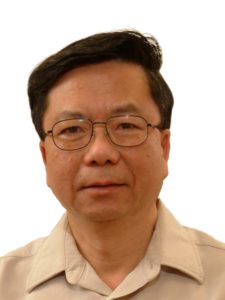
Professor
Henry Samueli School of Engineering and Applied Science
University of California, Los Angeles
Los Angeles, California 90095
Abstract: How do we guide a specific patient’s body through efficient and safe therapy toward a desired phenotype for improving health? Applying omic approach for personalized medicine in fact faces almost an infinite database. In addition, omic approach cannot provide quantitative information, e.g. dose, and cannot scale up to tissue, organ and body levels.
Recently, we have discovered that the drug-dose inputs are correlated with the phenotypic outputs with a Parabolic Response Surface (PRS). With a few calibration tests to determine the coefficients of the quadratic algebraic equation governing PRS, PRS is able to dictate the composition and the ratio of a globally optimized drug combination for treating disease.
The PRS platform has been validated in in vitro, preclinical and clinical tests. In addition, PRS based Phenotypic Personalized Medicine (PPM) can realize unprecedented levels of adaptability to identify the optimized drug combination for a specific patient. Furthermore, PRS is an indication agnostic platform technology, which has been successfully demonstrated in about 25 diseases for children and adults. By taking an unorthodox approach of bypassing the omic networks, the discovery of a Parabolic Response Surface (PRS) can redefine the drug discovery pathway.
Biography: Chih-Ming HO is a Distinguished Research Professor in UCLA School of Engineering. His research interest is in control of complex systems including personalized medicine, microfluidics, biosensor and turbulence. In 1997, Dr. Ho was inducted as a member of the US National Academy of Engineering. In the next year, he was elected as an Academician of Academia Sinica. Dr. Ho received Doctor of Engineering Honoris Causa from Hong Kong University of Science and Technology. Dr. Ho holds ten honorary chair professorships including the Einstein Professorship from Chinese Academy of Science. Dr. Ho is Fellow of AAAS, APS, AIAA, AIMBE and 3M-Nano Society.
Plenary Lecture 8
Demonstration Hall, 1/F
December 4 (Monday), 10:30-11:20
Photo-activated Peptide Nanoparticles for Cancer Therapy and Alzheimer’s Disease Diagnosis
Mingjun ZHANG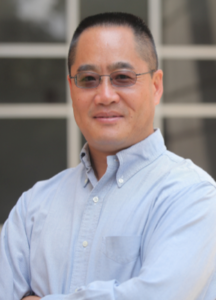
Professor
Department of Biomedical Engineering
Department of Surgery (Courtesy)
Department of Electrical and Computer Engineering (Courtesy)
Davis Heart and Lung Research Institute
Neurological Institute
Biophysics Program
Center for Regenerative Medicine and Cell Based Therapies
The Ohio State University
Columbus, OH 43210
Email: [email protected]
Abstract: Cancer is one of the major causes of death, and Alzheimer’s disease (AD) has the highest growing rate of causes for death in recent years. One of the major challenges for treating and diagnosing these diseases is the lack of externally controllable chemical reagents for targeting and imaging of disease molecules. Self-assembled short peptide nanoparticles hold great promise for targeting and imaging of biomolecules in vivo, as they are inherently biocompatible and can be easily modified to interface with biomolecules. This talk will present our recent research results on developing photo-activated peptide nanoparticles for cancer therapy and AD diagnosis. We will discuss 1) how a new class of photo-activated peptide nanoparticles can be self-assembled by using the 20 standard natural amino acids to shift light from ultraviolet to visible and near infrared range; 2) how a new type of photoactivated cyclic peptide nanoparticles can be tethered with tumor homing moieties and serve as a vehicle for targeted delivery of therapeutic reagents; and 3) how the peptide nanoparticles may be used for detecting Aβ aggregations in blood samples, which can be further employed for early noninvasive detection of AD. All the above peptide nanoparticles can be photo-activated for imaging and targeting, so that they can be used for selective and sensitive imaging and detection of disease molecules.
Biography: Mingjun ZHANG is a Professor in the Departments of Biomedical Engineering and Surgery (courtesy), Neurological Institute and Davis Heart and Lung Institute at The Ohio State University. He received the Doctor of Science degree in Systems Science and Mathematics from Washington University in St. Louis, and the PhD degree in Industrial Automation from Zhejiang University. He also holds MS degrees in Electrical Engineering and Bioengineering respectively from Stanford University. His BS/MS degrees were in Mechanical from Zhejiang University. He first discovered that ivy secretes nanoparticles for surface affixing (Nano Lett, 2008). In 2011, his group discovered a unique multi-flagella-based swimming mechanism of Giardia (PNAS) that has bee proposed for micro/nano-robotic propulsion. In 2012, his group discovered the curved swimming trajectories of whirligig beetles are more energy efficient than linear trajectories, which explains why they are more often observed in nature (PLoS Comp. Bio.). In 2013, his group discovered nanoparticles secreted from a carnivorous fungus could be used for immunochemotherapy (Adv. Func. Mater.). In 2014, his group discovered that T. foetus has distinct flagellar beating motions for linear swimming and turning, and multiflagellated propulsion does not necessarily contribute to greater thrust generation, and may have evolved for greater maneuverability or sensing (J. Roy. Soc., Inter.). In 2016, his group self-assembled first GFP/YFP/BFP-inspired fluorescent peptide nanoparticle shifting ultraviolet light to visible range (Nature Nanotechnology). In 2017, his research group discovered a new class of “physical biomarkers” for Alzheimer’s disease, and developed a computational algorithm to integrate the biomarkers and cognitive assessments to diagnose AD and predict its progression (Science Advances). His long-term research goal is to create a library of functional nanoparticles and used them as building blocks for sensing, actuation and control in medicine and robotics. Mingjun’s research has been sponsored by NSF, ARO, AFRL, ONR, ORNL, National Academies’ Keck Future Initiative, Mangurian Foundation, Ross Center for Brain Health and Performance and industries. Research results from his laboratory were highlighted by Science, Nature, AAAS Science, BBC news, Alzheimer’s News, American Chemical Society, Royal Society of Chemistry, Biomedical Engineering Society, and the National Science Foundation of USA. He was awarded Early Career Awards by IEEE Robotics and Automation Society, and the Office of Naval Research. He has 7 years biotechnology industry working experience in Silicon Valley, California, USA.


